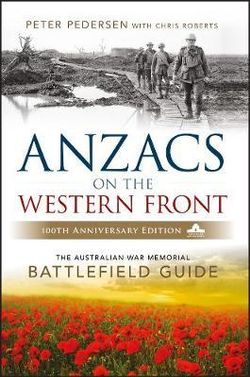What makes a good battlefield guide? There are several essentials.
They must have a brief but comprehensive description of the battle put in the context of the war. They should include something about the commanders and some words from the participants.

Paperback 600pp RRP: $49.95
They must have good maps. They should include illustrations from the time of the battle and the present so that the differences can be seen. They need hints about how to travel in the region. And a good index helps immensely. A warning not to touch unexploded ordnance needs prominence. Pocket rather than coffee table size is a must.
Perhaps the first battlefield guides for the Western Front in the Great War were published by the Michelin Tire Company. The earliest of this series were published even before the end of the First World War. They were initially in French then English and some in German. Though illustrated in black and white, they score quite well on the scale above. The photographs of destroyed villages being brought to life are fascinating. RUSI Victoria Library has a good selection of these guides.
There are quite several British battlefield guides on this topic though they are usually unsatisfactory for Australian and New Zealand users. The multi-volume Australian author John Laffin produced a guide more suitable for Anzac use that partially filled the need. However, it was not until 2012 that an excellent guide appeared – it was the earlier edition of this volume.
So why a second edition? The reasons demonstrate the meticulous work that has been put into this guide. Firstly, road numbers, paths, and buildings change, sometimes radically. Power-generating windmills sprout. This makes it difficult to recognise the battle scenes unless this sort of revision is done – and done by the authors on foot on the ground. Next, both the Australian and New Zealand governments have set up well-marked trails in the last few years and they help immensely. There were other more detailed revisions.
Equal prominence is given to Australians and Kiwis in this well-balanced volume and the contribution of other allies is suitably acknowledged. In addition, attention is drawn to adjacent allied sites.
What is the result? This is a battlefield guide of the highest standard. Its campaign and battle descriptions are apt. The personalities feature appropriately. The coloured maps were specially commissioned and are superb – whether of the battles or the present-day road systems. There are north points and scales. Colour photography with clever annotation complements the battle picture. Advice on viewing battle sites is well judged and timings well advised. The index is comprehensive. Personal equipment and safety hints are sensible. A large jacket pocket is advisable.
If you visit the Western Front take this book with you. Better still, read it cover-to-cover before.
Reviewed for RUSIV by Mike O’Brien, May 2018
Contact Royal United Services Institute about this article.






